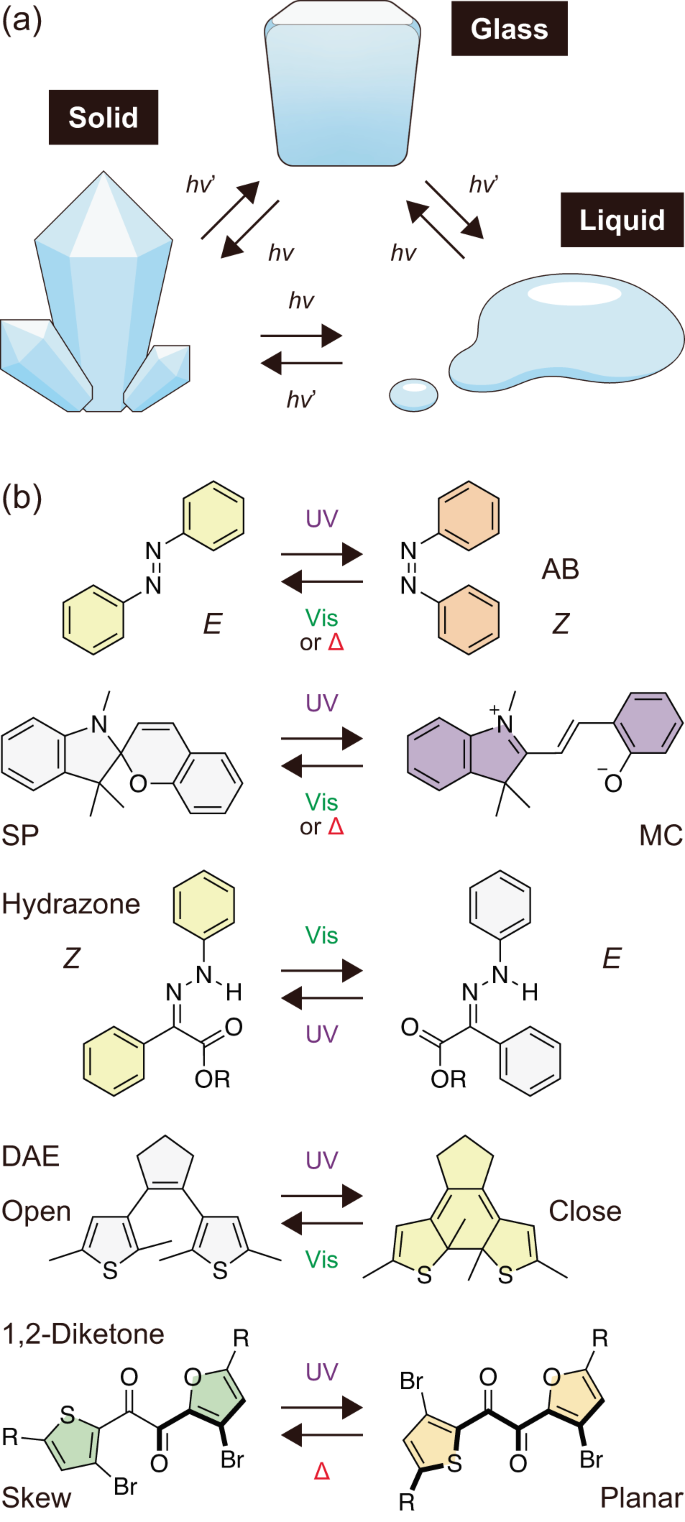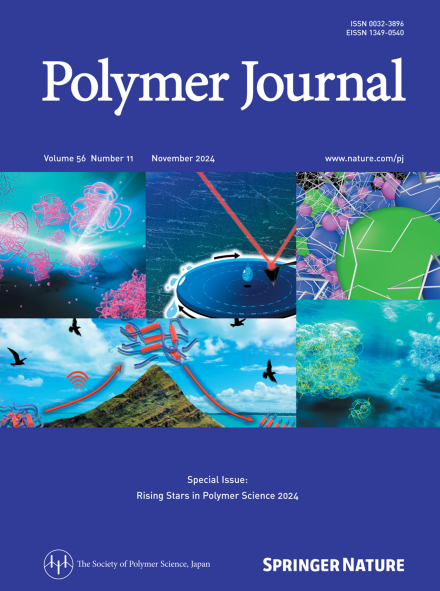Recent progress in photoinduced transitions between the solid, glass, and liquid states based on molecular photoswitches
IF 2.3
4区 化学
Q3 POLYMER SCIENCE
引用次数: 0
Abstract
Photoinduced transitions between the solid, glass, and liquid states based on molecular photoswitches promise a wide variety of applications. Photoswitchable adhesives are representative examples and are expected to contribute to material recycling for a sustainable future in the era of composite materials due to strong bonding and on-demand photo-induced debonding with minimal damage to the adherends. Only a few molecular photoswitches are known to undergo these transitions, but recent progress, mainly with azobenzene, has been remarkable. Here, we review the photoinduced transitions of small molecules and polymers over approximately a decade and systematically discuss the molecular designs, mechanisms, applications, merits and demerits, and future challenges in each photoswitch and the whole field. We hope this review provides useful information, inspiration, and ideas for the development of this field and the expansion of its applications. Photoinduced transitions between the solid, glass, and liquid states based on molecular photoswitches promise an enormous variety of applications, such as photoswitchable adhesives, which contribute to material recycling for a sustainable future in the era of composite materials. In this review, we highlight recent progress in the photoinduced transitions of small molecules and polymers and systematically discuss the molecular designs, mechanisms, applications, merits and demerits, and future challenges in each photoswitch and the whole field.


基于分子光开关的固态、玻璃态和液态之间光诱导转变的最新进展
基于分子光开关的光诱导固态、玻璃态和液态之间的转换具有广泛的应用前景。可光电开关粘合剂就是其中的代表,由于其粘合力强,可按需进行光诱导脱粘,对粘合剂的损害极小,因此有望在复合材料时代促进材料循环利用,实现可持续发展的未来。目前已知只有少数分子光开关会发生这些转变,但最近的进展(主要是偶氮苯)非常显著。在此,我们回顾了近十年来小分子和聚合物的光诱导转变,并系统地讨论了每种光开关和整个领域的分子设计、机制、应用、优缺点和未来挑战。我们希望这篇综述能够为这一领域的发展和应用拓展提供有用的信息、灵感和思路。
本文章由计算机程序翻译,如有差异,请以英文原文为准。
求助全文
约1分钟内获得全文
求助全文
来源期刊

Polymer Journal
化学-高分子科学
CiteScore
5.60
自引率
7.10%
发文量
131
审稿时长
2.5 months
期刊介绍:
Polymer Journal promotes research from all aspects of polymer science from anywhere in the world and aims to provide an integrated platform for scientific communication that assists the advancement of polymer science and related fields. The journal publishes Original Articles, Notes, Short Communications and Reviews.
Subject areas and topics of particular interest within the journal''s scope include, but are not limited to, those listed below:
Polymer synthesis and reactions
Polymer structures
Physical properties of polymers
Polymer surface and interfaces
Functional polymers
Supramolecular polymers
Self-assembled materials
Biopolymers and bio-related polymer materials
Polymer engineering.
 求助内容:
求助内容: 应助结果提醒方式:
应助结果提醒方式:


